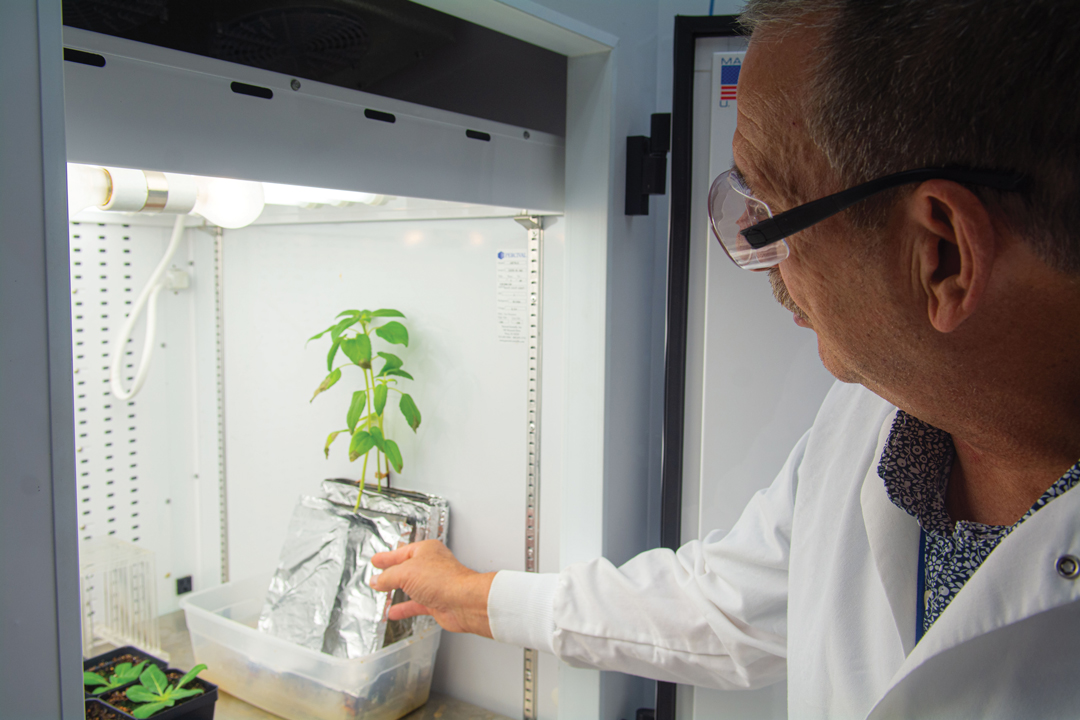SHARED VICTORY
BY TREVOR BACQUE
Years in the making, the agriculture industry celebrated a substantial victory when Health Canada announced crops produced by gene editing are as safe for consumption as those produced by conventional plant breeding.
The announcement was made in early June and was accompanied by a number of key changes and updates to regulatory policy that provide a higher level of certainty for both plant breeders and companies looking to Canada as a base of operations.
“With this clarified policy, Canada now has an opportunity to be a world leader in plant breeding innovation,” said Ian Affleck, CropLife Canada vice-president of biotechnology. He noted CropLife Canada has worked behind the scenes for nearly a decade and published papers in 2014 and 2016 that advocated for change. In 2018, the momentum had built and the guidance around gene editing began to be formally studied and updated. “Prior to this policy, we were falling behind in plant breeding innovation. Regulatory policies weren’t clear about what was required of the plant breeder to get product to market. Now it’s really clear.”
A major opacity surrounded pre-market assessments. Under the old system, a pre-market assessment was issued for a breeder who created a plant variety that exceeded the typical parameters of what would be considered a normal variation. So, if a breeder struck gold and created a canola variety that reduced pod shatter by 20 per cent, that could be flagged. Such a development would be seen as producing results far outside the norms of typical variation and would have been classified as a novel food or food ingredient. If it was flagged, it would then be subject to a two-year assessment process before moving forward, if it did so at all.
“There was a lack of clarity in what the trigger was for a pre-market assessment,” said Affleck. “This wasn’t only inhibiting things like gene editing. It was dragging on conventional plant breeding.”
Just to get an answer from government could take months to more than one year. Now, with more clearly defined rules for breeders, it provides great clarity up front and everyone involved in the process will know what is required of them. Affleck added the updated regulations also give Canada the ability to advise other countries that may seek to update their own regulations.
“We were falling behind but we are top of class when it comes to the clarity of the policy, the scientific basis of the policy and delivering the appropriate level of oversight,”
said Affleck.
The changes will also stem the tide of innovation drain in Canada, said Krista Thomas, Canada Grains Council vice-president of seed innovation and trade policy. “This is world-leading regulatory policy because it’s science-based and pragmatic,” she said. “It helps to align Canada with our trading partners and it’s good for innovation. It paves the way for new plant varieties to get into the hands of farmers faster.”
This is certainly the hope of Shannon Sereda, Alberta Wheat and Barley Commissions’ government relations manager, who believes the changes only bring positives to farmers. “The benefits to farmers really come at a good time,” she said. “It can take almost a decade for a new variety to be developed, put into the system and be adopted. If we can get new varieties with great traits by the use of gene editing or CRISPR, that’s good news for farmers to improve production attributes to help reduce or alleviate pressure of pests, diseases and more.”
Sereda, too, noted prior to the announcement by Health Canada, the country definitely lagged behind others with a regulatory system that was “a bit cumbersome.” Not anymore, though. She believes this now puts Canada in a much stronger position with major trading partners and may even allow for more economical use of the limited dollars allocated to Canadian research.
“The more efficient farmers can be, of course, this is going to level the playing field with competitiveness in and around access to innovative varieties that address critical problems farmers face,” said Sereda.
As potential investors can now be more certain of Canadian regulations, this stability brings a collective sigh of relief from breeders. One cautiously optimistic booster of the regulatory changes is Curtis Pozniak, a wheat breeder who serves as the director of the Crop Development Centre in Saskatoon, SK.
“It seems a sensible move given that gene editing can be quite precise, especially because you have to have some knowledge of the gene you hope to edit to create a desirable trait,” he said. “That understanding often comes from understanding the natural variation that already exists in the plant.”
From Pozniak’s perspective this bureaucratic update comes at just the right time. Scientists now continue to unlock more information about complex genes, such as those of wheat. This auspicious moment heralds a proliferation of gene editing less impeded by earlier barriers.
However, he does not see gene editing as a blanket solution to any and all breeding woes. It is yet another valuable tool available to research scientists, he said. There is also still much scientific research to do to understand which genes should be the target of gene editing experiments.
The big question is, will the intended buyers and end users of gene-edited crops accept the technology? Pozniak noted there must be growth in global acceptance and greater understanding of how gene editing, which uses a plant’s existing DNA, differs from genetic modification, which imports foreign DNA. Until such time, acceptance could remain theoretical indefinitely.
“We do get signals from time to time from customers, particularly from some lucrative international markets, that perhaps they are not yet ready to purchase the products of that technology,” he said.
There are two more pieces of the puzzle industry groups wish to see put in place. These involve the Canadian Food Inspection Agency, which must also update guidance on regulations. “If you’re a plant breeder and you produced something that needs any of these safety assessments you need to understand which of the three you need, if any,” said Thomas regarding food safety, environmental safety or livestock feed assessments prior to cultivation.

In a prepared email, Health Canada underscored its commitment to protect Canada’s food supply and ensure all products have undergone a rigorous assessment prior to sale. “Throughout the development of the new guidance, Health Canada has carefully evaluated the available scientific evidence related to new technologies used in plant breeding, either through its internal scientific review of the current literature, or through information provided by stakeholders,” read the statement.
According to government, consultations on the Canadian Food Inspection Agency portion of the regulations will have been held by late summer or fall. Final feedback from government could be released by December or early in 2023.
GENE EDITING 101
To help educate the general public about gene editing, a series of ag industry groups, led by the Canada Grains Council, launched Nature Nurtured. This informative website provides a simple overview of the gene editing process and outlines its implications for Canadian food production. The website offers a series of FAQs and stories about innovation in the food industry and details the ways in which farmers may benefit from gene editing solutions.
For more information, visit naturenurtured.ca.







Comments